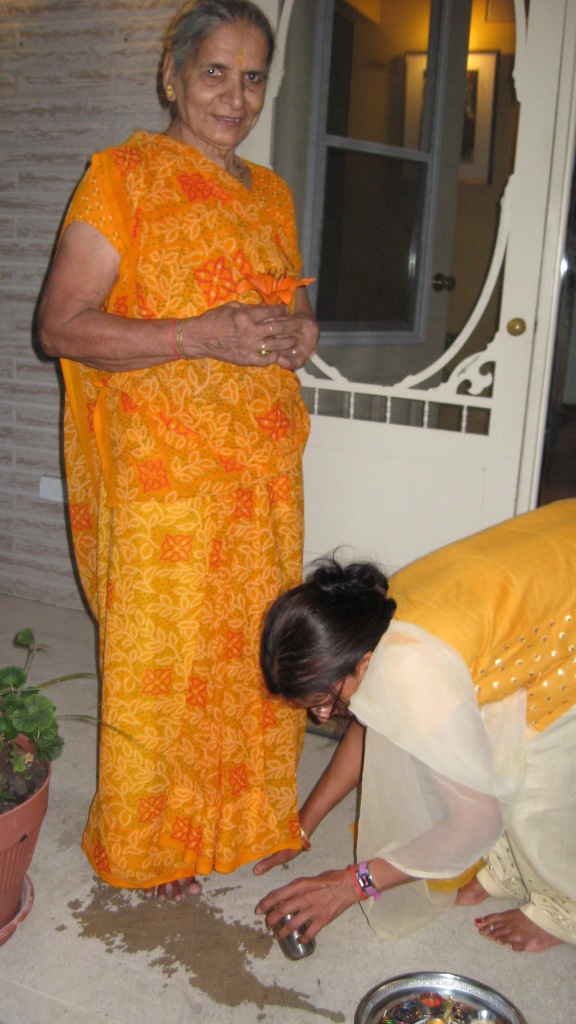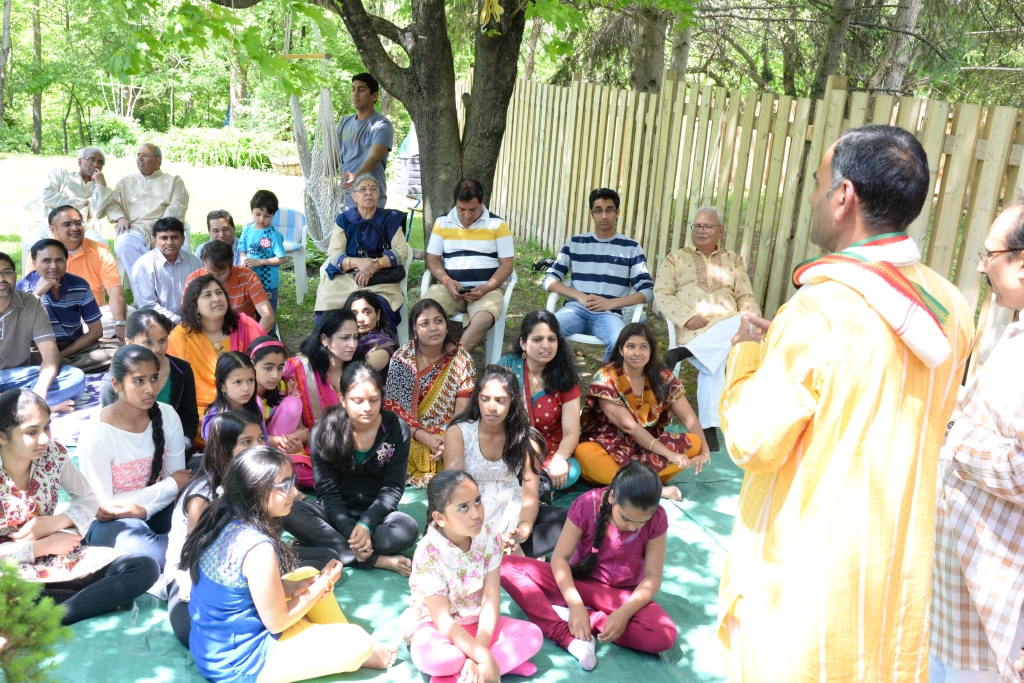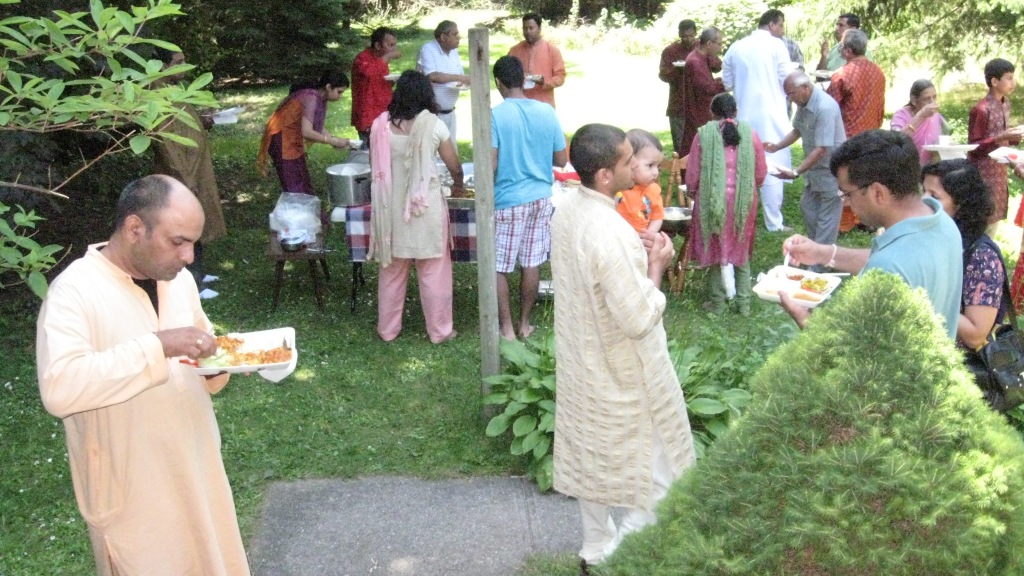Note from the presentation on the World Environment Day 2022.
I will focus my presentation on Environmental Ethics and Harmony with Nature in Sanatan Dharm which will lead to how personally we can make a difference. प्रकृति, संस्कृति एण्ड विक्रति.
2. I will cover that nature worship is an integral part of Sanatan dharma with some examples from the scriptures, conservation, and awakening aspects to save the planet and how individuals and together we can revive our ancient practices and restore the earth.
3. Environmental ethics are deeply rooted in Sanatan scriptures and most contain messages for preservation of the environment and ecological balance.
Nature, or Earth, has never been considered a hostile element to be conquered or dominated.
In fact, human is forbidden from exploiting nature and taught to live in harmony with nature and recognize that divinity prevails in all elements, including plants, animals, mountains, rivers, and nature. This has been well described in Shrimad Bhagavad Gita where Shri Krishna state that my material energies are divided into earth, water, fire, air, ether, mind, intelligence, and ego. भूमिरापोनलों वायु खं मनो बुदधिरेव च अहंकार एतियं मे भिन्नः प्रकृति अष्टधा॥ Interconnections between the elements and life forms make us all a part of one family. This Vedic vision of unity is the basis for an ecological approach in which we honour the entire universe as part of our own higher Self. वसुधैव कुटुंबकम।
Ancient scientists/Rishies perceived that all material manifestations are a shadow of the spiritual. Our scriptures advised to start the day with a prayer to mother Earth:
ॐ पृथ्वी त्वया धृता लोका देवी त्वम् विष्णुना धृता। त्वम् च धारय मां देवी पवित्रं कुरु चासनम्।। समुद्र वसने देवी पर्वत स्तन मण्डले, विष्णु पत्नी नमोस्तुभ्यं पाद: स्पर्शं क्षमस्वमे।
O Mother Earth, the worlds are maintained by you. Oh, goddess, you are upheld by Lord Vishnu. Kindly purify this seat and maintain me.”
In the Vedic literature mother, Earth is personified as the Goddess Bhumi or Prithvi.
The Prithvi Sukta in Atharva Veda states माता भूमि पुत्रोहं पृथिव्या” (Mata Bhumi putroham prithivyah) पृथ्वी मेरी माता है और मैं उसका पुत्र हूँ “Earth is my mother I am her son” and advises to save and revere our Mother Earth, every Day.
स्वच्छ, धवल, पावन हरित, रहे अमर परिधान। अर्थ ‘अर्थ’ का जानकर हम करें सदा सम्मान ।।
Her beauty and profusion are vividly portrayed in the beautiful verses in the Atharva Veda. O mother, with your oceans, rivers, and other bodies of water, you give us land to grow grains, on which our survival depends.
O mother, bearing folk who speak different languages and follow different religions, treating them all as residents of the same house, please pour a thousand streams of treasure to enrich me एण्ड all.
The awareness of our ancient seers about the environment, and its constituents and a vision to live in harmony with the environment was not merely physical but was far wider and much comprehensive.
The concept of 330 million gods in Sanatan Dharm permeates the entire unlimited world of nature, underlining its fundamental doctrine that God exists in the heart of all beings. Hence, India has a vast network of holy shrines – holy rivers, holy mountains, sacred places, sacred plants, and trees – a pervasive divine presence is what Hinduism emphasizes across its religious texts, be it Vedas, Upanishads, Puranas, Smriti, Bhagavad Gita, Ramayana or Mahabharata. I recite few
अयोध्या-मथुरामायाकाशीकांचीत्वन्तिका, पुरी द्वारावतीचैव सप्तैते मोक्षदायिकाः।
गङ्गे च यमुने चैव गोदावरि सरस्वति । नर्मदे सिन्धु कावेरि जलेऽस्मिन् संनिधिं कुरु ॥
महेन्द्रो मलयः सह्यो देवतात्मा हिमालयः ध्येयो रैवतको विन्ध्यो गिरिश्चारावलिस्तथा ||
The much adored Hindu deity Lord Krishna reinstated respect for nature by honouring the Govardhan Parwat and making the Yamuna free of poisonous pollution from Kalia naag and the most versatile and respected scripture Bhagavad Gita makes various mentions of His oneness with Nature. For instance, the sloka 20 of Chapter 10 reads,
अहमात्मा गुडाकेश सर्वभूताशयस्थित: | अहमादिश्च मध्यं च भूतानामन्त एव च
I am the Self seated in the heart of all creatures. I am the beginning, the middle, and the very end of all beings. All beings have, therefore, to be treated alike.
I pervade the Universe. All objects in the Universe rest on me like pearls on the thread of a garland. Even the view that the Vṛṇḍāvana Forest is sacred because Kṛṣṇa valued it is consistent with the claim that human agents morally ought to consider it for its own sake in deciding what to do.
4. Environmental Awareness and engagement
- Most ancient texts demonstrate the praise and respect for the nature
- Do not cut trees, because they remove pollution (Rig Veda, 6:48:17)
- The Hindu religion also stresses vigilance in the conservation of trees. Destruction of forests is taken as the destruction of the state. Protection of animals is considered a sacred duty of man (Charak Sanhita)
- Most Hindus believe that all living things are sacred because they are part of God, as is the natural world.
5. Conserve Ecology or Perish
the Bhagavad Gita Ch-3 summarizes that
Life is sustained by different kinds of food; rainfall produces food; timely movement of clouds brings rains; to get the clouds moving on time yajna, religious sacrifice, helps; yajna is performed through rituals; those actions that produce rituals belong to God; God is revealed by the Vedas; the Vedas are preserved by the human mind, and the human mind is nourished by food. This is the cycle that helps the existence of all forms of life on this globe.
अन्नाद्भवन्ति भूतानि पर्जन्यादन्नसम्भवः। यज्ञाद्भवति पर्जन्यो यज्ञः कर्मसमुद्भवः ॥
One who does not contribute to the maintenance of this cycle is considered as a destroyer of all life.
6. The Environment as Our Home
In the Sanskrit language family is parivara, and the environment is paryavarana. If we think of the environment as our home and all of its members as our family it is clear that the key to conserving nature is devotion, love—giving and serving.
Nature, Prakriti, can give and serve. But the role of humanity, Purusha, is then to protect. Nowadays Purusha is not interested in protecting but in exploiting, so nature has to defend herself.
As it is through ignorance that we destroy our relationships in the family and within the environment, that ignorance becomes the root cause of our suffering.
7. Only One earth Protect and Conserve
Sustainable or living in harmony with nature will merely be a paper exercise unless our lives become reconnected and in balance, cooperation, and harmony with nature.
Climate change, nature and biodiversity loss, and pollution and waste –evidence that Earth is “code red” is all around us and growing more ominous every day. This year’s campaign, #OnlyOneEarth, highlights the need to reset the balance with nature through transformative changes in how we eat, live, work and move around.
Though government can make stringent regulations, we know that success will depend on our personal decisions to effect change and push for actions and reactions.
Many Vedic hymns are songs that identify the man as part of his environment.
Dharm imbibes and encourages ecological ethics and responsibility to care for the earth and nature. A country as ‘Mother land’ and nature’s five elements – Air, Fire (Agni), Water (Jal), Space (Vyom), and Earth (Prithvi) – as the constituents of the body and foundation of an interconnected web of life of all living beings. The swadharm instills an innate sense of oneness between all things. This lays a strong foundation for vegetarianism and the preservation of ecological sanctity.
Wilderness is the favourite abode of the divine and Banyan tree is the holy tree where saints and seers like to sit in a state of trance to attain union/ yog with supreme knowledge and enlightenment. Varah Purana says,
Varah Purana, Padma Puran, Bhagavat Puran, Matsya Puran all have specified reverence and importance of tree plantation and caring for the earth and other key elements.
दश कूप सम वापी, दश वापी समोहदरह दश हृद समय पुत्रों, दश पुत्रो सामो द्रुमह – One tree is equivalent to Ten kids.
“A person who plants Neem tree, Peepal tree, Banyan tree, two Pomegranates, five mangoes, two oranges, and any ten flowering shrubs, including creepers, shall never go to hell.”
The Panchvati concept of preserving five types of trees is well described in the Ramayan.
According to Padma Purana, A person who is engaged in killing creatures; polluting ponds, wells, and tanks, and destroying gardens, goes to hell.”
In the Arthaśāstra, Kauṭilya suggests that rulers should fine people who mistreat nature.
All these references simply show that ancient Indians were concerned with the protection of their environment and preached respect for all forms of life and emphasizes on preservation of bio-diversity.
Many indigenous cultures and the old pagan traditions of Europe have a similar understanding of all nature as sacred and recognize the special sacred places in their environment.
However, in modern times we have forgotten our traditional sacred approach to nature. Under the compulsions caused by overpopulation, lack of education, and the need to develop the economy, nature in India and everywhere in the world is suffering.
We are so used to the urban lifestyle and lost our ecological vision in competition to have a better economical vision.
The environment became the victim of the empire, and like all empires, it dresses things up in the language of morality and duty. When we turn wilderness over to agriculture, we speak of our duty to feed the poor. When we industrialize the wild places and cut forests out of greed, we speak of our duty to modernization. When we spear whales, we speak of our duty to science. When we raze forests and mountains, we speak of our duty to develop. We alter the atmospheric makeup of the entire world: half of us pretend it’s not happening, and the other half start looking for new machines that will reverse it. This is how empires work, and environmental degradation continues.
Material growth is so integrated into a life that most people are unable to understand the effect of their consumer choices, traveling behaviour, recycling efforts, and lifestyles on climatic change.
The environment falls prey to compulsive market behaviour. Without the intervention of united social forces, the current economic system simply will not safeguard our planet.
Our ancient traditions need to be honored and their practices be revived. It is important that we reclaim the ecological vision inherent in our religion and ancient cultures. This means bringing nature back into our lives, not only through rituals, and conferences but the reality on the ground.
Protecting nature is our duty and, it is important that we strongly put our vision before western thinkers and compel to examine the profound philosophy of Vedanta which sees the unity of all beings in the Self.
As we try to raise awareness about the wide-ranging consequences of climate change, let us be inspired by visions of old and remember to protect the one thing we all share in common — our planet, your planet, and no one can advocate for it like you and I can. No one can protect it like you can. There is OnlyOneEarth….
Prime Minister Narendra Modi mentioned that ‘We are proud of our long history and tradition of harmonious existence between man and nature. He launched the ‘Lifestyle for the Environment (LiFE) Movement’, a global initiative, and asserted that its vision is to live a lifestyle that is in tune with our planet and does not harm it. He said India is ready to lend its support to actions to make the environment better and improve global wellness.
Mahatma Gandhi talked about a zero-carbon lifestyle. In our daily life choices, let us pick the most sustainable options. Let us follow the principle of reuse, reduce and recycle. Our planet is one but our efforts have to be many. Plants and trees can be called the youngest members of this family, as they are always connected to earth, like babies who cling to their mother. A little ‘elder’ to them are the animals, which move on all fours, like slightly older babies. Humans, who walk upright, are the eldest members of this family. It is our responsibility to take care of our younger ‘siblings’ and ensure that everybody in the family has the opportunity to explore and bloom.
If we want to teach the kids about protecting the planet, we’ll want to exhibit behavior that matches these values. By living what we preach, we’re able to get the point across, therefore we have to seriously investigate and change within.
8 – Summary
In the end, I will leave you the Native American Proverb that We do not inherit the Earth from our ancestors, we borrow it from our children.
- There is a great role played by dharm in protecting the environment.
Our individual decisions shape how our next generations and societies impact the environment. As well as making our personal lives more sustainable, as individuals, we can press for and support faster and more far-reaching environmental change from larger entities like governments and businesses.
- Human is considered as part of nature not apart from nature.
We truly do have the power to build a future in which nature and people can thrive together. We need to broaden our definition of personal action beyond what we buy or use. Let us be more aware and concerned about protecting our environment.
- Environmental ethics ask human not to exploit but to establish a correct view of nature, respect and live in harmony with nature.
- Interconnections between the elements and life forms make us all a part of one family. Hindus considered the earth as the mother and have articulated the need to sustain and promote ecological balance.
Sarva bhuta hita – the common good takes precedence over individual advantage including protection of the environment.
- We should investigate and change within – Life style – food, living, clothing, shelters, movement and energy usage.
- Ancient traditions need to be honoured and their practices to be revived and restored to protect the environment.
Since divine presence is everywhere all things coexist and have a connection with others. This inspires to maintain harmonious relations between human beings and nature.
Coexistence is vital and requires recognition and respect of other species in nature
All-pervading divine force and see divinity in everything. Therefore, take only what you need (Isa Upanishad)
- Messenger is the proof of the message. We environmental professionals should become true ambassadors and role models.
यद्यदाचरति श्रेष्ठस्तत्तदेवेतरो जनः। स यत्प्रमाणं कुरुते लोकस्तदनुवर्तते ॥३-२१॥
Whatever a leader does, that other man also does (imitate) ; whatever he sets up as the standard, that the world (people) follows.
To have a balanced, peaceful life, let the human world create less disturbance to our surroundings. Substantial efforts in planting trees, conserving soil, protecting biological diversity, and finding new ways of producing natural energy could help to a greater extent in maintaining a balanced environmental harmony in our present world.
धन्यवाद ![--]()














